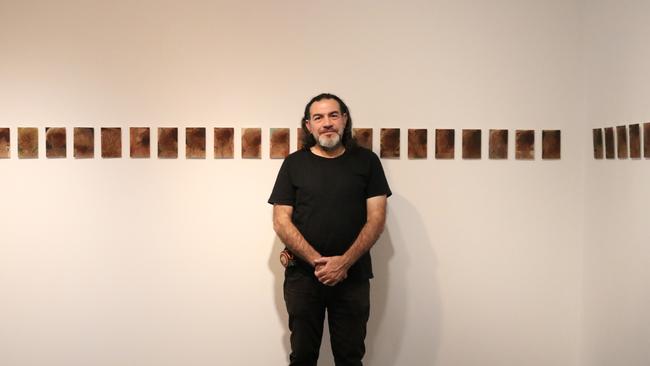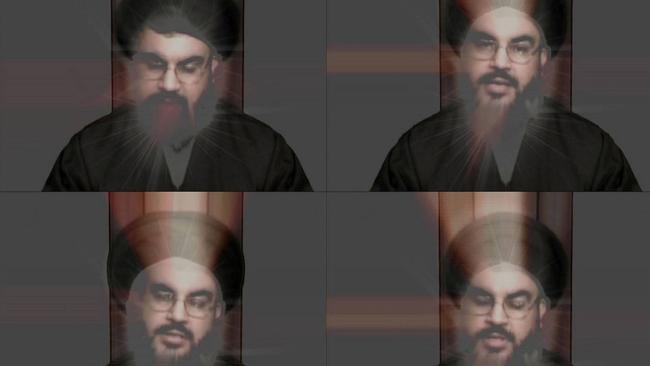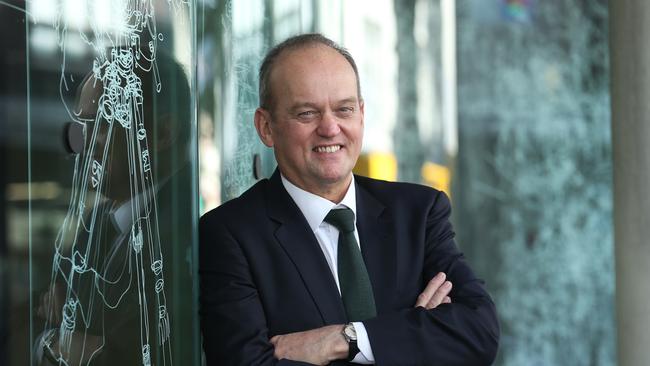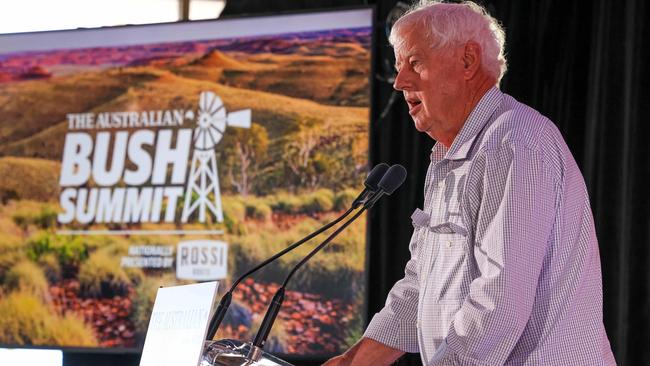Arts council takes creative approach to racism

Khaled Sabsabi was announced as Australia’s artistic representative to the Venice Biennale last week, a prestigious event that sees dozens of nations dispatch their top talent to the waterlogged city for exhibitions of their work.
In announcing this selection, Creative Australia chair Robert Morgan and CEO Adrian Collette feted Sabsabi for reflecting the “diversity and plurality of Australia’s rich culture” and said his art would “spark meaningful conversations with audiences around the world”.
But what were they talking about? Were they referring to Sabsabi’s questionable and ambiguous usage of Hassan Nasrallah, the dead Hezbollah leader, in his art?
Nasrallah has appeared at least twice in Sabsabi’s early oeuvre. In one prominent work, archived by the Museum of Contemporary Art, the late Hezbollah chief featured as the centrepiece of an elaborate video installation.
Surely this is not the diversity and plurality of Australian art Morgan and Collette were referring to.
In the blurb on its website, the MCA wrote-up Sabsabi’s video installation by first describing Hezbollah as a “paramilitary and political organisation”, without mentioning that its military wing was proscribed as a terrorist organisation in 2003, or that the Australian government upgraded that listing in 2021 to proscribe it entirely.

The MCA then describes Sabsabi’s use of Nasrallah’s face and the “beams of light that shine from his eyes and mouth, suggestive of a divine illumination”, or what could be construed as reverence (Nasrallah as deity, etc) and which is all a universe apart from how Australian leaders spoke of Nasrallah following his death by 2000-pound bomb in September.
Recall Anthony Albanese and what he said of those who lionised Nasrallah and held up his portrait at demonstrations: “There’s no place for mourning a terrorist leader, and we’re very concerned about some of the terrorist symbols. It’s completely unacceptable.”
The PM went so far as to publicly condemn the Iranian ambassador, Ahmad Sadeghi, for praising Nasrallah as a “blessed martyr”. Peter Dutton went further and said Sadeghi should banned from the country.
We don’t know exactly what Sabsabi feels about Nasrallah, or his death, or what he meant by taking a bunch of beams and shining them out of Nasrallah’s face, or painting him on a watercolour, as he did for a separate exhibition. But, we do know how Sabsabi feels about Israel: he was one of several artists who boycotted the 2022 Sydney Festival after its organisers committed the grievous sin of accepting $20,000 in funding from the Israeli Embassy to pay for a production put on by an invited Israeli choreographer.
One prominent supporter of Sabsabi’s boycott decision was Michael Dagostino, director of the University of Sydney’s Chau Chak Wing Museum. Dagostino was jointly chosen with Sabsabi to attend the Venice Biennale as an “artistic team” and was similarly feted by Morgan and Collette in their press announcement.

Which leaves us wondering why Creative Australia would choose two people who favour boycotts of Israel, one of them who seemingly lauded a terrorist leader in his past work, to be the custodians of our nation’s reputation at this prestigious biennale in Venice?
A look at the hapless leadership of Collette, the CEO of Creative Australia, might provide the answers.
He was questioned in November at a parliamentary estimates hearing over the anti-Semitic rot seeming to pervade his organisation. Liberal senator Sarah Henderson presented Collette with social media posts captured from an account run by Creative Australia project manager Tahmina Maskinyar, in which she called for the eradication of Israel and the pursuit of “intifada”, a term that suggests support for violent aggression against Jews.
Henderson said, of one of these posts, it constituted a “grossly offensive anti-Semitic comment” and demanded of Collette what he might do about it.
“We cannot stop people expressing personal views,” was Collette’s impotent reply. “I’d seriously have to take some advice on that, because I’m not sure what our duty and responsibilities as an employer might be.”
It’s pretty simple, Adrian. You lead a taxpayer-funded organisation. One of your public servants has called for the removal of Israel, an “intifada until victory”, and a senator believes these remarks are anti-Semitic and unlikely to align with the values of the organisation — and might more than likely bring it into disrepute.
Or maybe not?
Peddling hate after hours won’t even lead to a slap with a wet lettuce leaf at Creative Australia, it seems.
A spokeswoman told us: “After consideration, Creative Australia determined there was no breach of the code of conduct.”
Your taxpayer dollars at work.
Losing the farm
Is it the end of the road for WA’s Pastoralists and Graziers Association? It certainly looks that way, after Tuesday’s creditors meeting outlined a massive $2.1m debt to the Australian Taxation Office, and few ways forward.
No word from RSM administrator Jerome Hohen and Greg Dudley on the hunt for the PGA’s lost bank account, supposed to contain more than $2m.
Hardly surprising, though, given the loss of the money is the cause of the PGA’s collapse and misconduct is the likely culprit.
Aside from the tax office, the bulk of money owed to creditors is to its staff, so it would hardly be wise to update a public forum they’re attending into how an investigation is progressing. But, there was also little word on the way forward.
RSM’s initial fees are being paid from a whip round of the PGA’s executive — each was asked to put in $3000 each, and a few ponied up a bit more than that. But, Margin Call hears an appeal to the PGA’s broader membership to dip into their business accounts for a similar donation hasn’t had much of an impact, as yet.
Small surprise. Wealthy members of the group — such as Gina Rinehart, Kerry Stokes, Andrew Forrest and Paul Holmes a Court — wouldn’t miss the loose change. But farmers are a canny lot, and you’d be a fool to throw money down a hole until you knew how much would be needed to fill it up.
At the moment that’s at least $2.1m, unless the ATO is in a forgiving mood. Which seems unlikely.

For context, that’s more than four years of membership fees, according to the last set of accounts presented to the PGA executive in 2024. Mind you, those same set of accounts also showed interest coming in from the missing bank account, so you’d probably want to take its claims of $471,000 in membership receipts with a grain of salt.
And who would pony up to rescue an organisation whose executive committee, led by PGA President Tony Seabrook, has been caught asleep at the wheel?
While a late rescue isn’t out of the question, it is looking like the 118-year-old organisation is toast.
And that means the PGA’s great rival, WAFarmers, might finally get its way and run a takeover of its long-term opposition.
For those not familiar with the internecine warfare within WA farming circles, the broad historical differences between the two organisations have been over government. WAFarmers has traditionally been in favour of having them. The PGA? Not so much.
In practice, the battle lines have been around single wheat and livestock market desks, such as the old Australian Wheat Board.
Most of those underlying differences disappeared with the AWB, however. Still, the PGA has steadfastly resisted any unification move, dismissing WAFarmers as “agrarian socialists” at the last attempt in 2019.
The WAFarmers boss at the time, Trevor Whittington, replied with snide remarks about PGA’s secrecy around its financial statements and funding sources.
Whittington is still at WAFarmers, looking on with interest, telling his members a merger “may still happen”.



To join the conversation, please log in. Don't have an account? Register
Join the conversation, you are commenting as Logout